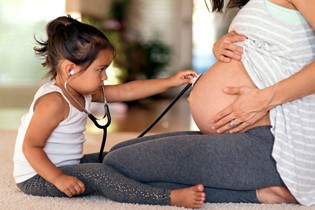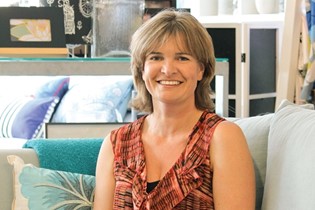Fertility treatment: public and private options

Where do you go if you're having trouble getting pregnant? OHbaby! fertility expert Dr Richard Fisher outlines the options available in the public and private sectors.
If infertility was simply a physical manifestation of a disease state then its management would be much simpler than it really is. Infertility is, however, as much an emotional issue as a physical one so there are no set rules about when to go for help.
Traditionally, the word sterility was commonly used, which usually meant that a couple had not conceived over a long period of time and were unlikely to do so in the future. Over time, however, the term infertility has become more widely accepted and it includes both sterility and the more modern concept of sub-fertility where there is delay but not necessarily an absolute barrier to conception. Like all biological variables, it is entirely normal for some couples to take longer than others to conceive. There is a range of normal but no set time that is absolute.
"Fecundibility" is the term used to describe any couple's chance of conception per month and the most important variable of this is the age of the woman. Although age is very important in assessing fecundibility, the fact that a woman is young is not a reason for doing nothing. At age 25 the average woman will take around four to five months to conceive. This assumes, of course, that her partner is fertile. At 35 it takes almost twice as long on average to conceive and then by 40 twice as much again.
How old are you?
Clearly, any rule that says infertility is defined by the length of time trying, doesn't make sense. A young woman who has been trying for six months and has not conceived is much more likely to have a significant problem than a 40 year old who has been trying for a similar time. While the younger woman has time to wait, the older one does not and so for both of them early presentation for assessment would seem sensible.
While men do not usually rate much of a mention when it comes to age, there is now clear evidence that older men's partners take longer to conceive than average. Women with older partners should consider this when deciding how long to wait.
Until very recently, standard teaching in medical schools has been that the definition of infertility is that a couple has been trying to conceive for one year. This makes no sense at all for the younger woman who clearly has a problem early and makes little sense also in a case where either partner has a history of surgery or prior interventions or obvious hormonal abnormalities which would limit their chances.
This variability in background led Fertility Associates to develop an interactive biological clock, which not only defines the chance of conception per month per age but also gives advice about when is an appropriate time to seek a medical investigation. Investigation does not mean treatment but is simply a good time to make an assessment about likely underlying factors and a plan for the future.
You can find the biological clock either on the Fertility Associates website at www.biologicalclock.co.nz or download an iPhone or iPad app from iTunes.
So where do you go for help if you think you need it? Although there is a limited range of tests available to general practitioners, good general practitioners who know your history well should be able to make an assessment of potential underlying issues and arrange for reasonably straightforward tests to assess fundamentals of fertility such as sperm counts and hormone tests.
In the absence of any history suggesting a problem, that may be all that needs to be done to offer reassurance while waiting. If either you or your GP are unable to be reassured by this initial investigation, then referral to a secondary level is appropriate.
State-funded services
The DHBs' criteria for referral to a public hospital differ throughout New Zealand but in general if there are significant issues in history or examination there should be no delay. Some DHBs limit access to women beyond 40 and decline to see people who are currently smoking or who are significantly obese. Both smoking and obesity are known to reduce the chance of conception month by month and a serious plan to eliminate these factors may need to be undertaken before referral.
In the Auckland region, all referrals go to a central clearing house and patients are seen by reproductive medicine specialists but in most parts of the country general gynaecologists are the first port of call. Although being seen at a gynaecology clinic is not an efficient process for the investigation and treatment of infertility, it does allow further investigations to take place and in particular assessments of the Fallopian tubes by either x-ray or laparoscopy.
Although the common perception of infertility management is often of complex interventions, many couples simply need assessment and reassurance and time for conception to occur. If problems are identified, however, then access to further publicly funded care is limited by guidelines which are based on the likelihood of conception without treatment.
As with many surgical interventions, a scoring system exists to make sure those who most need help get treated first. But even those in whom delay to conception is thought to be the most likely outcome will inevitably become eligible for treatment.
The scoring criteria are based around diagnosis and time spent trying up to that stage and are then modified by social parameters such as smoking, weight and whether infertility has been caused by prior sterilisation.
Private services
An alternative route to investigation is to be referred to a private gynaecologist or reproductive medicine specialist. In areas where fertility specialists are available, the process tends to be quicker and more efficient but good gynaecologists can fill the role if necessary. As in most things in medicine, reaching a diagnosis as to the underlying cause of the disease is the key to future management. For around 25% of couples, even by this stage no obvious explanation will be available. Nevertheless, this defines the pathway of future investigation and treatment that is potentially available.
What funding is available?
Access to publicly funded treatment at a tertiary level (which mainly involves IVF or ovarian stimulation and intra-uterine insemination) is limited to couples with no children, although access can still be available if you already have a child but the wait is longer. Public funding is available for up to two packages of treatment if the first try is unsuccessful. A package of treatment might involve a single cycle of IVF or three or four cycles of intra-uterine insemination or ovulation induction.
Running in parallel to this is privately accessible treatment in all the major centres. Infertility treatment is perceived as being expensive. It certainly can be in an absolute sense but when compared with many other medical interventions it is only relatively so.
Privately funded treatment can range from around $200 per month of treatment to $11,000 per cycle. The highest cost is associated with IVF.
Common surgical procedures such as laparoscopic ovarian cystectomy cost very much the same as a simple appendicectomy. Compared with gall bladder disease requiring cholecystectomy at around $15,000 for the procedure, and hip replacements costing between $20,000 and $25,000, IVF doesn't look so bad. Also, if it was covered by health insurance, then concern over treatment being "costly" would abate. We are fortunate we don't live in the United States where all of these costs are between three and five times as much again.
Women should conceive as early as they can. But modern life sometimes makes this advice not so easy to take with long-term relationships generally being established later in life and the higher incidence of relationship separation.
|
Dr Richard Fisher(CNZM, FRCOG, FRANZCOG, CREI) is Adjunct Professor in the Liggins Institute. He set up Fertility Associates in 1987 with Freddie Graham and is now New Zealand's foremost spokesperson on infertility issues. In 2009, Richard was made a Companion of the New Zealand Order of Merit for his services to medicine. For more info about fertility issues go to http://www.fertilityassociates.co.nz/. |

AS FEATURED IN ISSUE 16 OF OHbaby! MAGAZINE. CHECK OUT OTHER ARTICLES IN THIS ISSUE BELOW

















